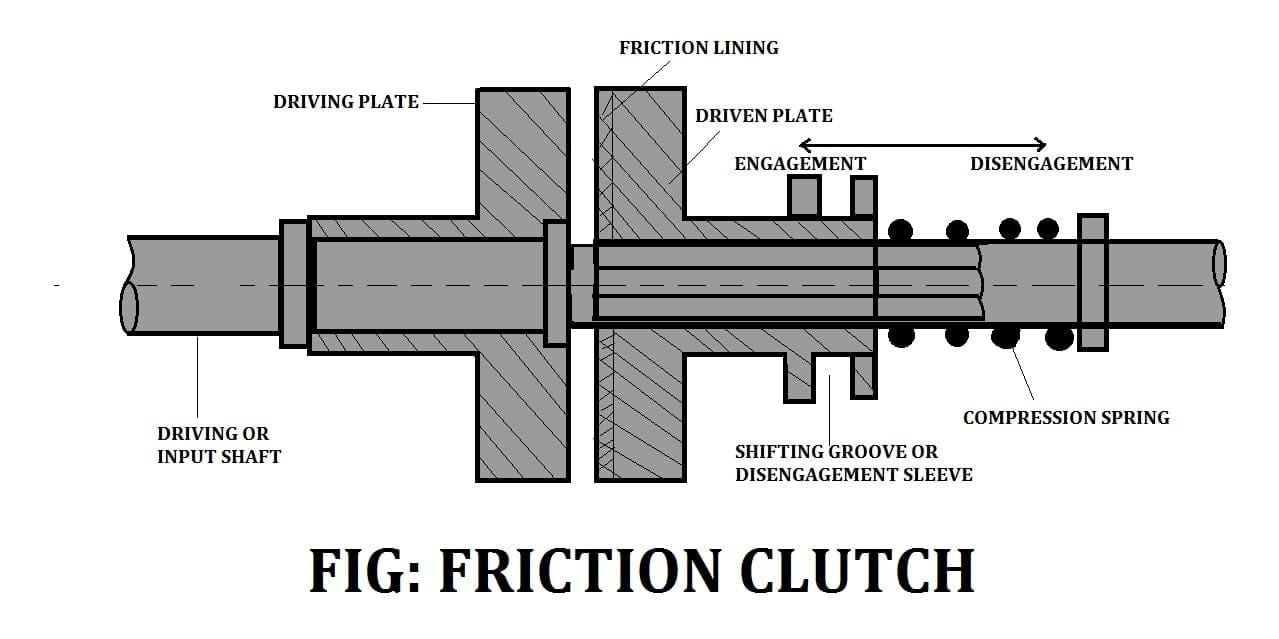
Different Types of Clutches Explained in Detail [Notes & PDF]
19K Share 1.7M views 5 years ago physics and animation video Cars of today normally use a car clutch to transmit power produced by the engine to the gear box. The vast majority of cars and.
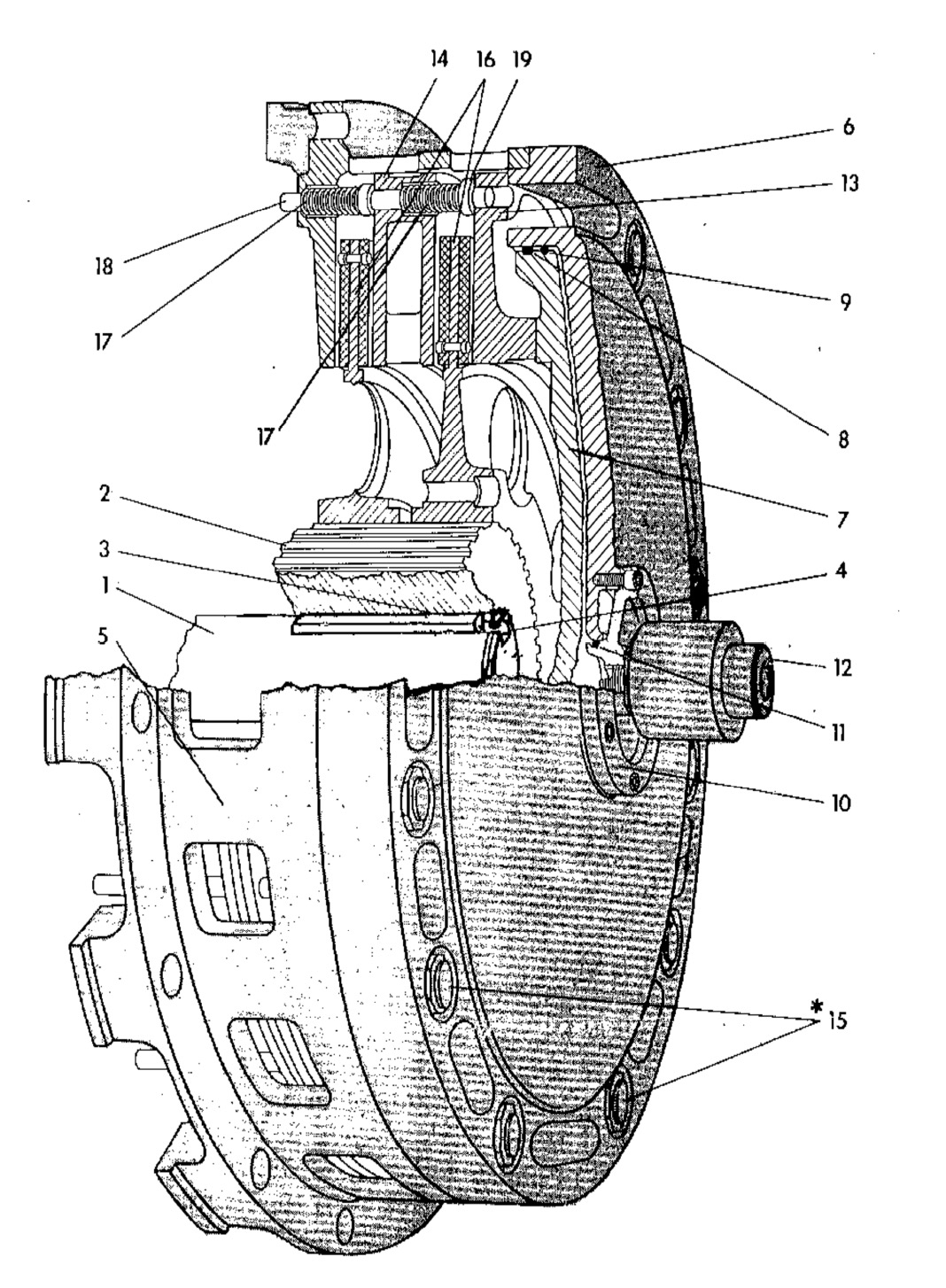
Type LIP Friction Clutch A6D Form BCN Technical Services
A friction clutch is a type of clutch that uses friction to connect and disconnect the power transmission from the engine to the transmission. It typically consists of a flywheel attached to the engine, a pressure plate, and a clutch plate.
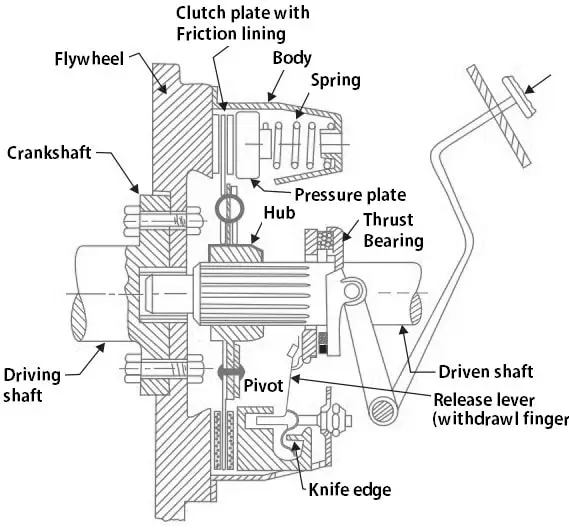
What is a Clutch? Friction Clutch ExtruDesign
The below figure shows the diagram of a hydraulic clutch system used in an automobile. It consists of the following parts. 1) Flywheel: The flywheel is connected to the engine crankshaft.
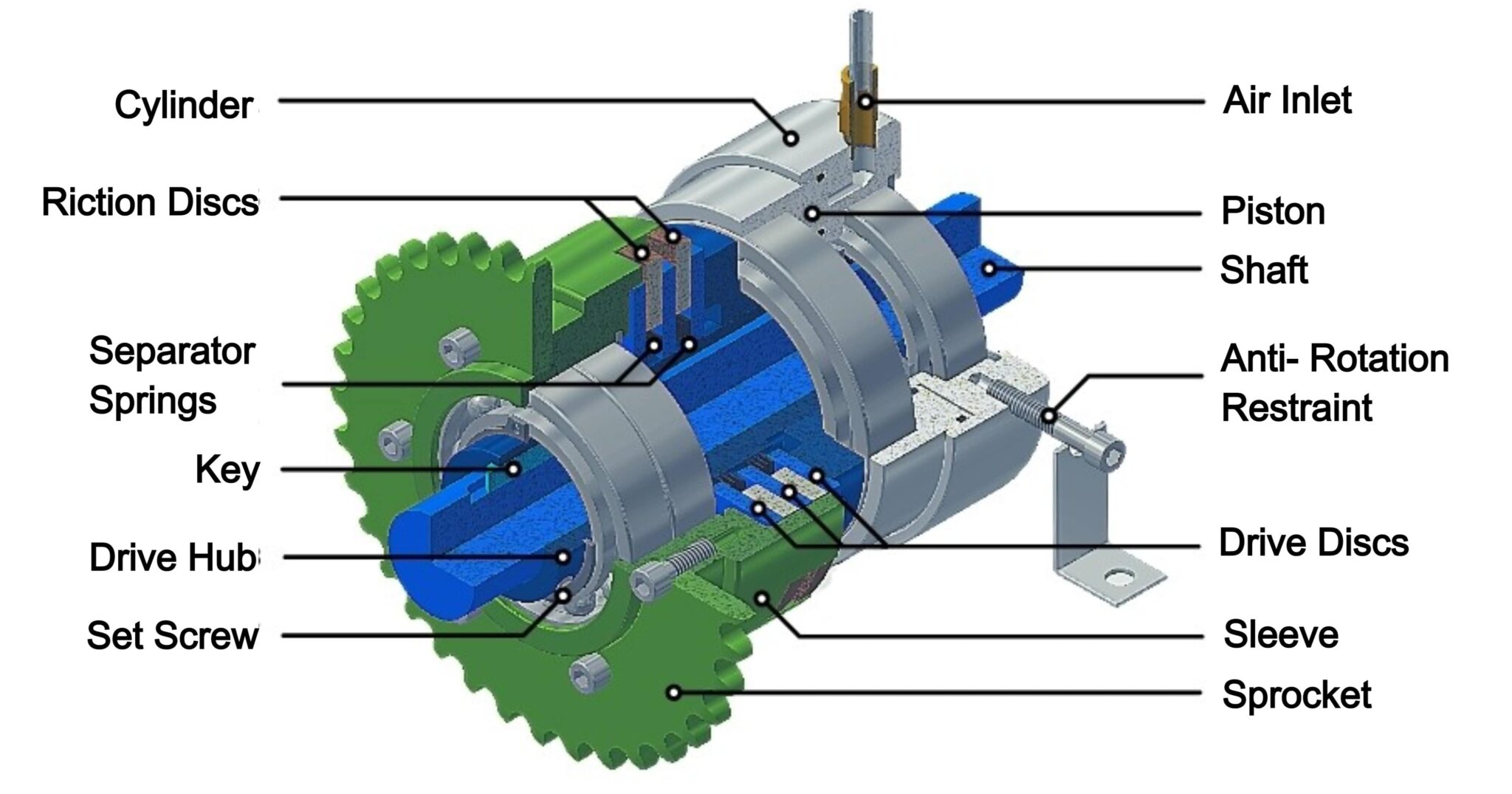
10 Types of Clutch and How They Work? [Explained with Pictures] Engineering Learn
The friction lining on the friction plate serves as a holding mechanism for the flywheel and pressure plate as well as a source of friction when the pressure plate exerts a force on it, rotating the three components together as a single unit. As a result, the flywheel and gearbox are connected to transfer power.

How a clutch works! (Animation) Clutch, How does it work ? single plate friction clutch
Friction clutches are mechanical devices used to engage and disengage the power transmission between an engine or motor and a driven component, such as a shaft or a machine. They operate on the principle of creating frictional contact between two surfaces to transmit torque and motion.

Main parts of a singledisc clutch system Download Scientific Diagram
#1 Pressure Plate To allow for back-and-forth movement, the pressure plate is mounted on a splined shaft. The clutch pedal regulates the sliding of the friction discs, which are bolted to the pressure plate. #2 Clutch Plate A clutch plate is a metallic plate with external frictional lines.

Automotive Clutch Characteristics & Types CarBikeTech
Friction clutch Single plate clutch Multiplate clutch Wet Dry Cone clutch External Internal Centrifugal Clutch Semi-centrifugal clutch Conical spring clutch or Diaphragm clutch Tapered finger type Crown spring type Positive clutch Dog clutch Spline Clutch Hydraulic clutch Electromagnetic clutch Vacuum clutch Overrunning clutch or freewheel unit

Clutch Technology Part Two, The Clutch Disc Friction Material MotoIQ
#2. Friction Clutches: The friction clutch is another most important type. It is used to transmit the rotary motion of one shaft to another when desired. The axes of the two shafts are coincident. The surfaces can be pressed firmly against one against when engaged and the clutch tends to rotate as a single unit.
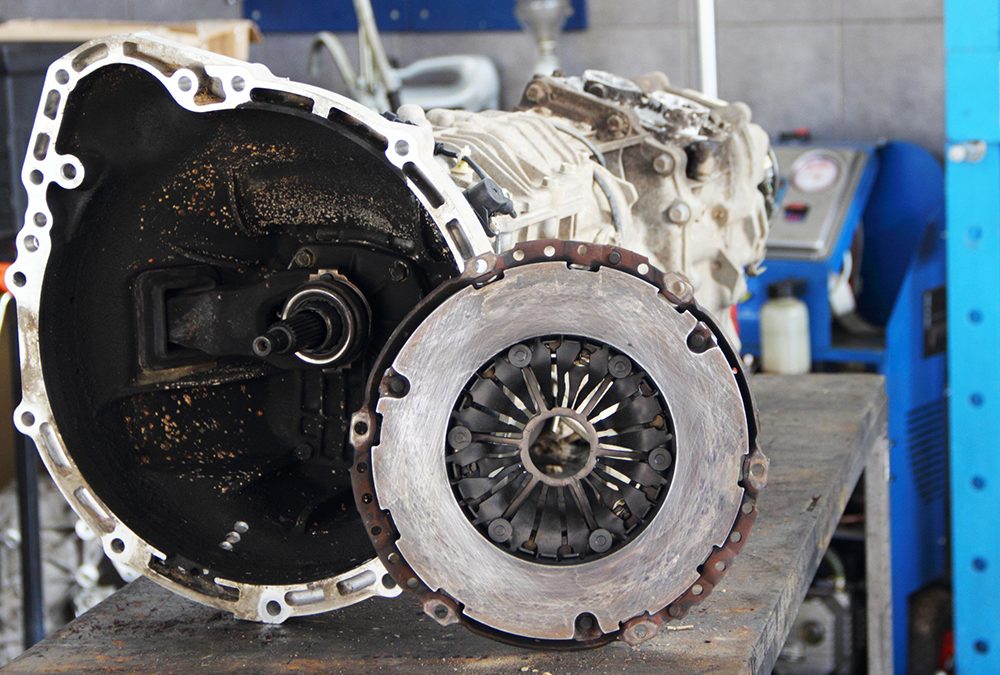
Understanding How a Friction Clutch Plate Works Technician.Academy
The driven (or friction) plate runs on a splined input shaft , through which the power is transmitted to the gearbox. The plate has friction linings, similar to brake linings, on both its faces. This allows the drive to be taken up smoothly when the clutch is engaged.
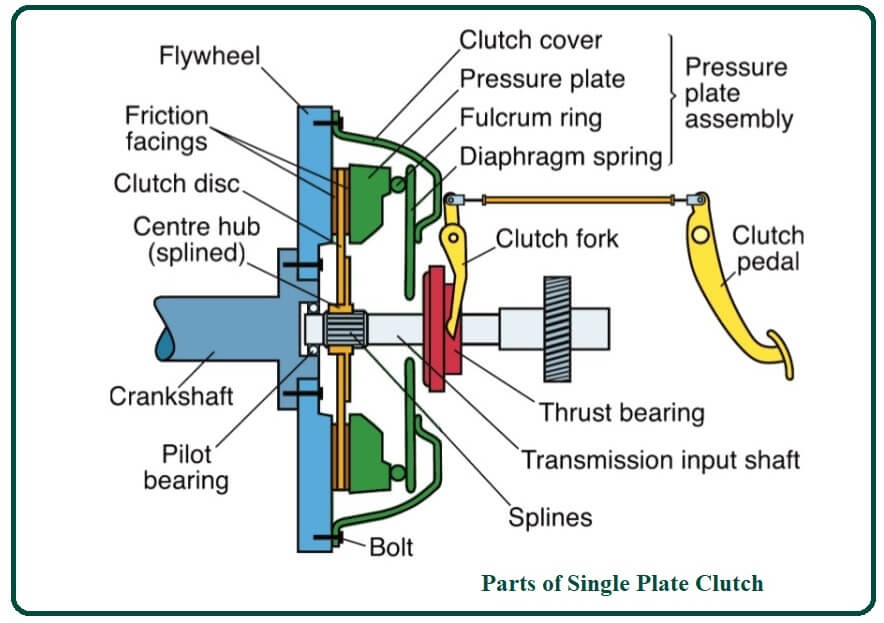
What Is Single Plate Clutch Construction of Single Plate Clutch Working of Single Plate Clutch
1. Single plate clutch Engagement & disengagement of single plate clutch ! The single plate clutches have fewer parts comparatively & are very easy to understand. The device contains only 2 friction discs. Torque transmission takes place when both of them come in contact with each other.
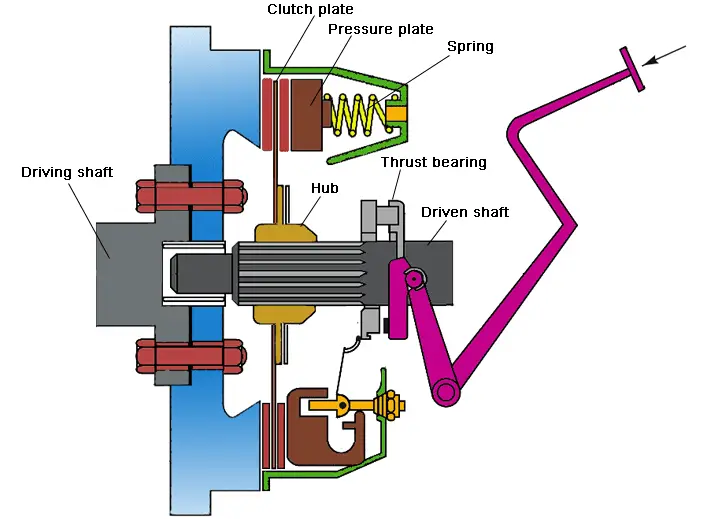
How a Single Plate Clutch Works? Mech4study
A friction clutch. Due to the amount of wear and tear caused by the friction between the clutch plate and the flywheel, certain machines use wet clutches. In a wet clutch, liquid lubricant helps the parts turn smoothly and stops them from wearing out as quickly from the constant friction. Dry clutches lack lubrication between parts.

How does Friction clutch mechanism works YouTube
This diagram show the position of the clutch in a manual transmission, but clutches are found in both manual and automatic transmissions. Clutches are useful in devices that have two rotating shafts, including cars. One of the shafts is typically driven by a motor or pulley, and the other shaft drives another device.
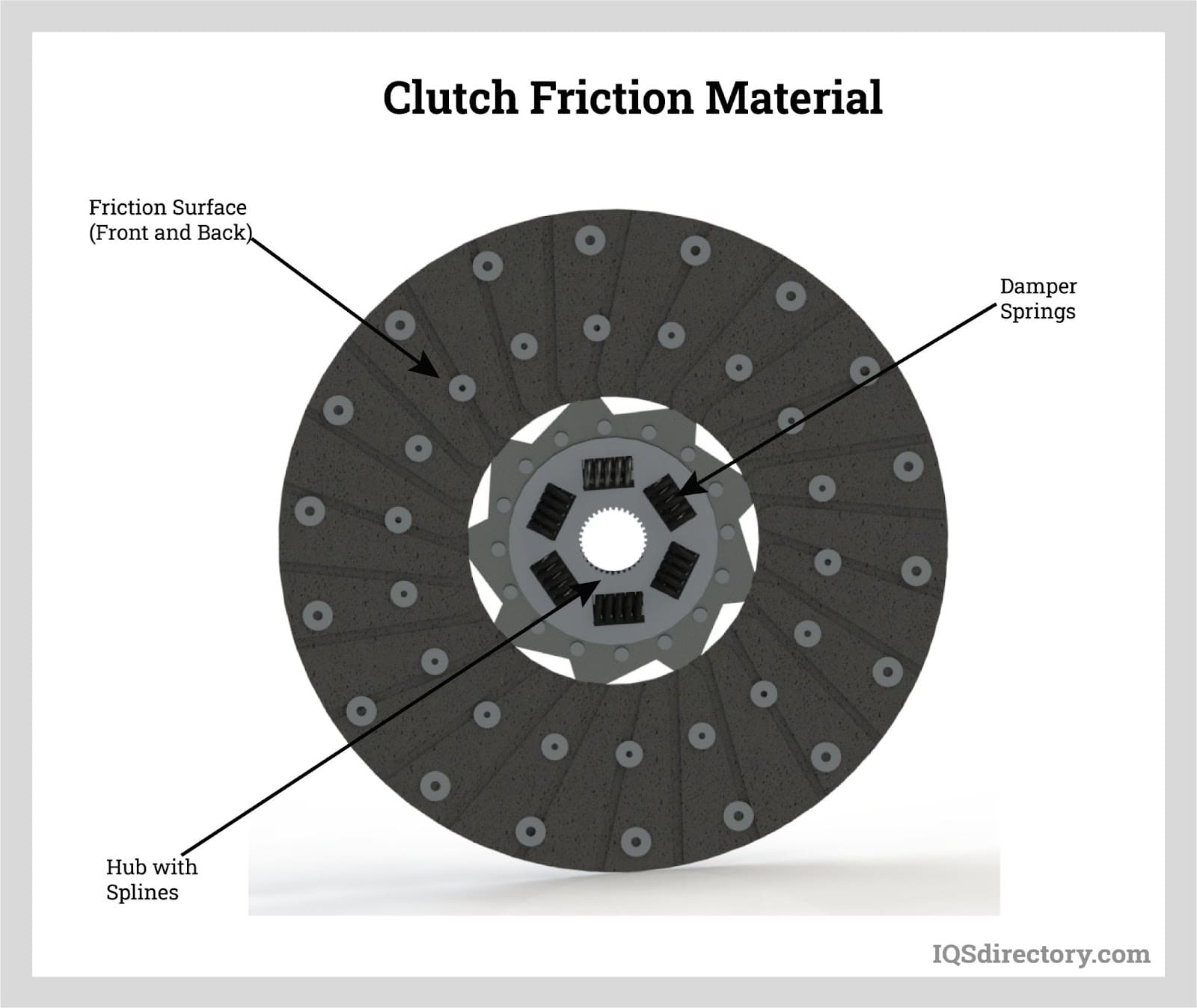
Friction Materials What Are They? How Do They Work? Types
A friction clutch transmits power by virtue of friction developed between contacting surface. The friction surface is typically flat and perpendicular to the axis of rotation. Two or more surface is pressed together by using compression spring.
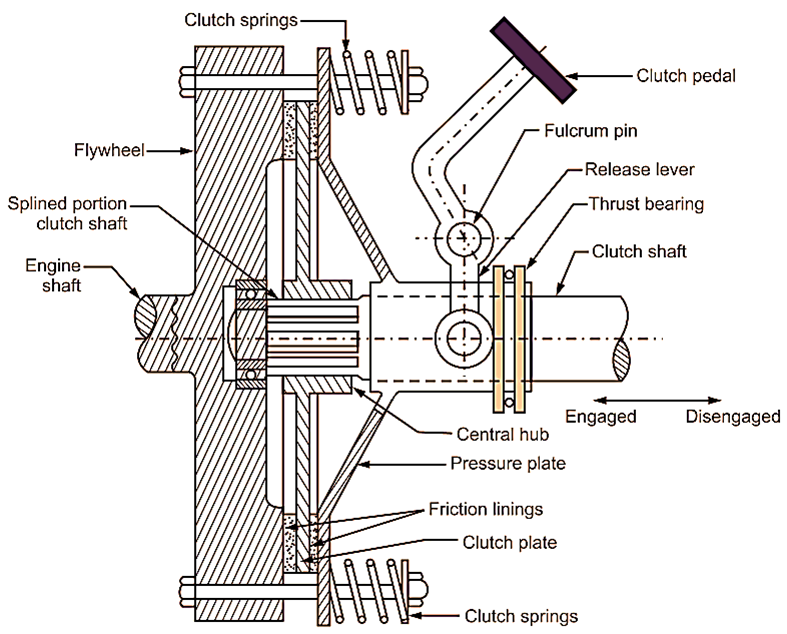
What is Single Plate Clutch? Working, Diagram, Construction & Applications ElectricalWorkbook
4] Friction disc:- It is also known as friction plate. It has asbestos lining for frictional contact. The friction plates are externally toothed and these plates are mounted into the clutch drum. The friction plates can easily slide into the slots of clutch drum. 5] Steel plate:- These plates are internally toothed and mounted on inner splined hub.
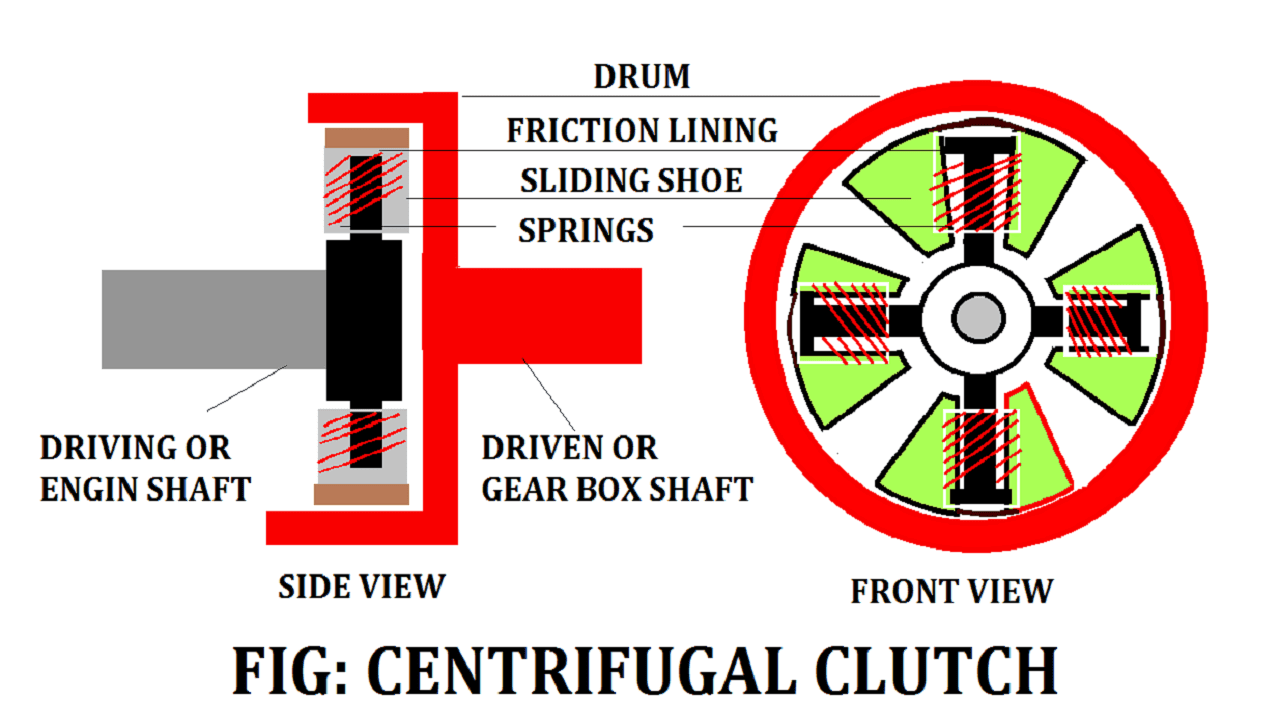
Different Types of Clutches Explained in Detail [Notes & PDF]
Single plate clutch diagram: Construction of Single plate clutch: 1) Single plate clutch consists of main three parts are friction plate, pressure plate, flywheel. And other parts are clutch pedal, clutch spring, and bearings.

Know How Selecting your clutch Repco Australia
Construction: Cone clutch working: Cone clutch advantages: Cone clutch disadvantages: Application of cone clutch: Cone clutch diagram: Working principle: Cone clutch works on the Principle of friction. The outer cone has a friction lining on its inner conical surface & Inner cone has friction lining on its outer conical surface.